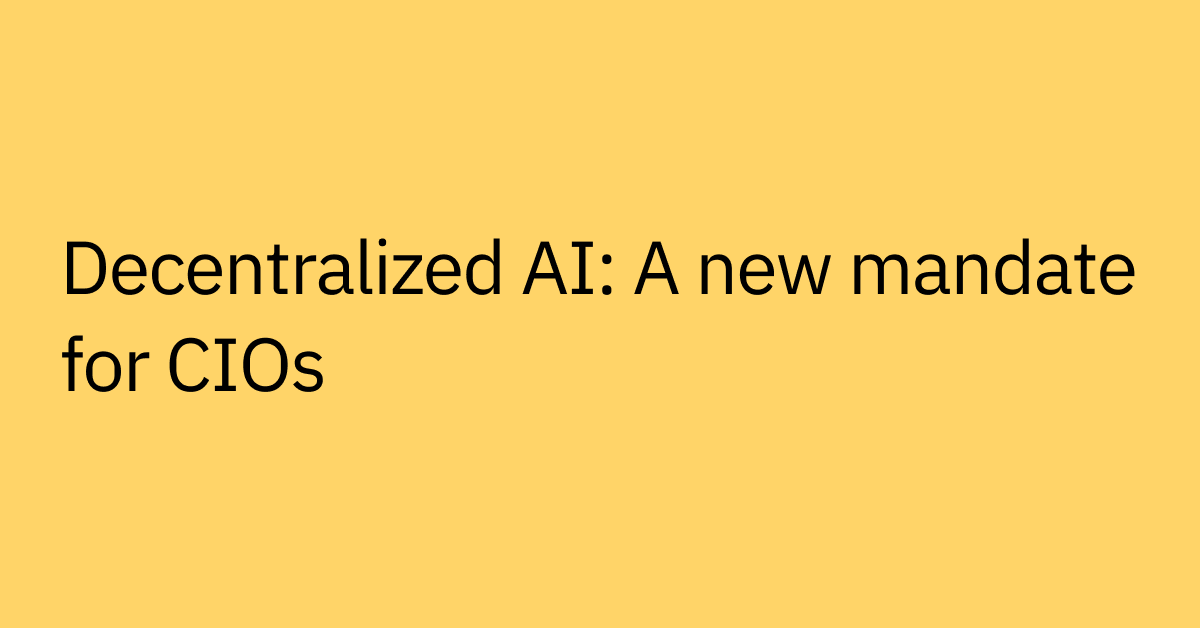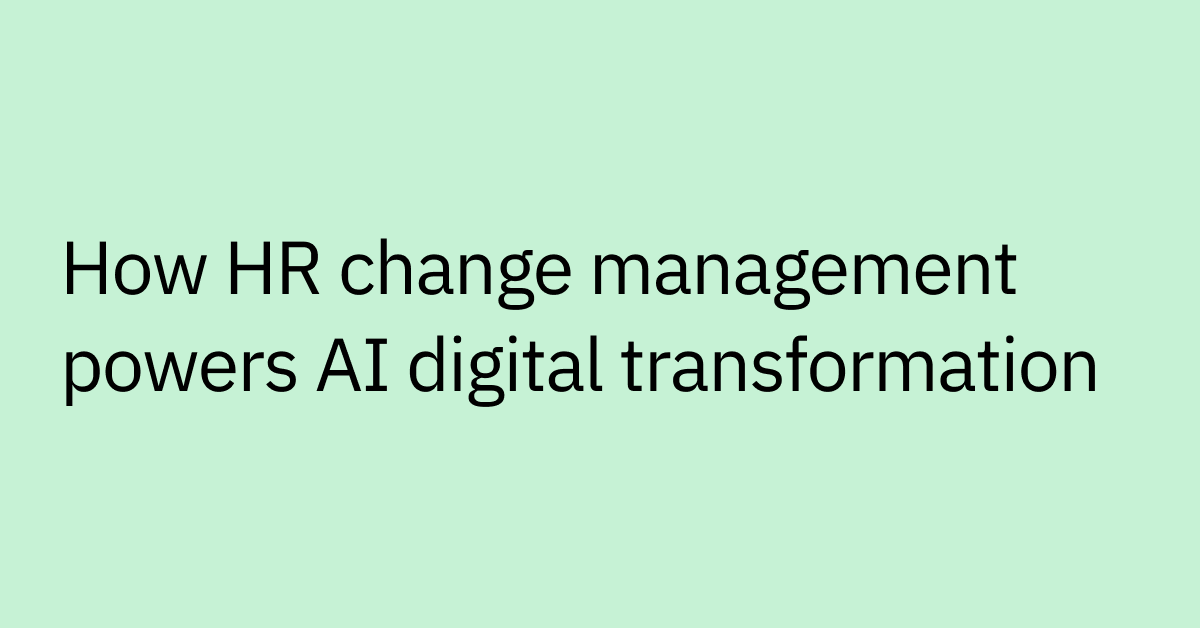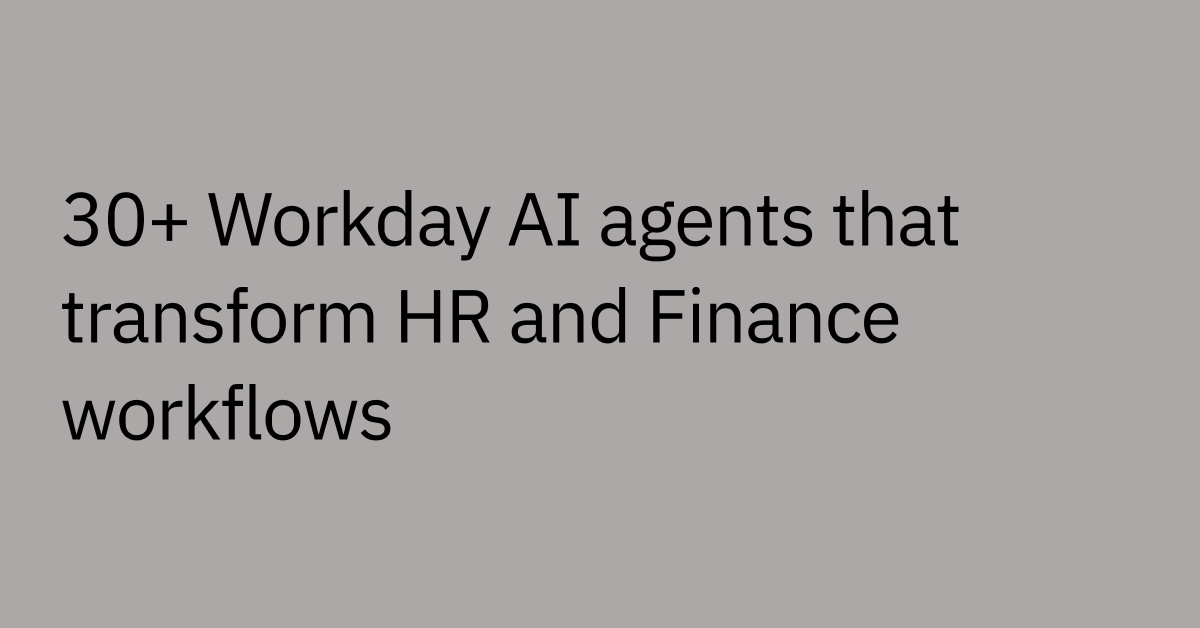Table of contents
- Traditional surveys miss the context and come too late to fix the root issue — AI can help close that gap.
- There are 12 core EX metrics worth tracking, from employee satisfaction and engagement to ticket trends and app usage.
- AI can analyze unstructured data from support tickets, chat logs, and tools to uncover real-time insight.
- Real-time sentiment tracking makes it easier to identify friction before it impacts productivity or morale.
- Moveworks Employee Experience Insights (EXI) turns scattered feedback into structured, actionable KPIs — complete with benchmarks and trends.
Employee experience (EX) is the sum of every interaction your employees have with your organization — from onboarding and HR support to the everyday tools and workflows they rely on.
It shapes how employees feel about their work environment, how engaged they are, and how efficiently they’re able to get things done.
But traditional approaches to measuring EX often fall short.
Surveys, for example, can be vague and time-consuming. Responses tend to be subjective, and participation is usually low. And by the time results come in, the moment that caused frustration has already passed.
Manually tagging support tickets isn’t much better. It’s inconsistent, labor-intensive, and doesn’t scale in large organizations.
Even ITSM dashboards, while helpful, usually focus on how fast agents respond, not the actual quality of the employee’s workplace experience.
Without accurate, scalable, real-time insights, it’s difficult to spot issues before they snowball, understand what’s causing dissatisfaction among team members, or prioritize fixes that actually move the needle.
That’s why organizations are moving toward AI-powered employee experience technology. These systems analyze unstructured data— like the language employees use in support tickets — to uncover patterns, surface sentiment, and highlight areas where the experience is falling short.
What are employee experience metrics?
Employee experience metrics measure how well your organization supports people across the tools, processes, and services they rely on.
They help you see what’s working, what’s slowing people down, and how it’s all affecting employee engagement, satisfaction levels, and productivity.
Unlike traditional approaches that rely mainly on employee surveys or static dashboards, you can draw EX metrics directly from the systems employees use every day, like IT and HR support tickets, app usage data, and internal feedback.
With the help of AI, organizations can extract these insights continuously and at scale — without waiting for survey results.
Employee experience metrics you can track include:
- Sentiment trends in support requests and interactions
- Time to resolution for IT or HR issues
- Frequency of repeat tickets on the same topic or tool
- Volume of escalations or negative feedback
- Employee effort score (how easy it is to get help and move forward — similar to a Customer Effort Score)
- Tool adoption or drop-off rates across core systems
These are just a few examples — see the full list of 12 essential EX metrics in the next section.
These insights can help you pinpoint problems faster and make changes that actually improve everyday work.
Employee experience is key to a productive enterprise
Beyond boosting morale, a great employee experience has a direct impact on performance, retention, and business success.
When employees feel supported, engaged, and equipped to do their jobs, they’re far more likely to stay productive and motivated. And the numbers back it up:
- Employees who report a strong workplace experience are 68% less likely to consider quitting.
- Highly engaged teams see 78% fewer absences and improved employee retention.
That tells us one thing: employee experience drives business outcomes. But the reality is that 62% of employees are disengaged, with 17% actively disconnected from their work.
When employees can get help quickly, when tools work the way they should, and when processes are smooth, everyone wins.
Measuring the right EX key performance indicators (KPIs) helps you:
- Catch problems before burnout and churn set in.
- Understand what’s frustrating teams.
- Prioritize fixes that improve job satisfaction and performance.
- Create an environment where people are empowered to do their best work.
And with AI, you can monitor these signals continuously — spotting gaps before they impact productivity or morale.
12 Essential employee experience metrics to track
To improve EX, you first need to understand it. These key metrics cover sentiment, behavior, service quality, and outcomes — offering a well-rounded view of how employees are feeling, performing, and interacting with your internal systems.
Here's what to track and what each one can tell you:
EX Metric | What it measures | Why it matters |
Employee satisfaction | How happy employees are with their workspace, tools, and overall experience, usually gathered through surveys or feedback forms. | Directly reflects how well your organization is meeting employee expectations and day-to-day needs. |
Employee engagement | The level of emotional investment employees have in their work and your company’s mission. | Higher engagement scores lead to stronger performance, loyalty, and collaboration. |
Employee productivity | How efficiently employees complete their work, measured by output, task completion, or goal achievement. | Helps identify what’s supporting or hindering productivity across teams. |
Employee retention rates | The percentage of employees who stay with the company over time. | A strong indicator of company culture and organizational health. |
Employee net promoter score (eNPS) | How likely employees are to recommend your company as a great place to work. | A quick way to gauge overall sentiment and employee loyalty. |
Employee absenteeism | The frequency and duration of unplanned employee absences. | A high absenteeism rate may signal burnout, disengagement, or workplace issues. |
Internal promotions | The number of roles filled from within the company. | Indicates growth opportunities and whether employees see a clear development path internally. |
Issue resolution metrics | Measures how quickly and effectively internal issues are resolved (e.g., time to resolution, time to first contact). | A key reflection of how responsive your support systems are to employee needs. |
Tool or system usage rates | How often employees use internal tools, support systems, or digital services. | Low usage could mean systems aren’t user-friendly, accessible, or meeting real needs. |
Service quality and coverage | Looks at support volume, agent load, and SLA compliance. | Reveals how scalable and reliable your internal services are. |
Experience drivers | Highlights recurring issues or pain points identified through tickets, employee feedback, or pulse surveys. | Pinpoints what’s dragging down experience and where to focus improvements. |
Comparative metrics | Compares key experience indicators across time, teams, or locations. (e.g., comparing satisfaction scores between departments or quarters) | Helps you with benchmarking, spotting trends, and identifying which initiatives are working best. |
How to measure employee experience
To build a workplace where people thrive, you need reliable ways to understand how your experience (EX) initiatives are landing at different stages of the employee lifecycle. The right measurement methods reveal valuable insights across key moments — from onboarding to exit.
Conventional ways to measure employee experience
Traditionally, companies have focused on gathering direct feedback from employees. These methods do still offer valuable insights — especially when used consistently, benchmarked over time, and followed up with action:
- Employee surveys: Employers can use surveys during the candidate experience, onboarding, employee engagement, Employee Net Promoter Score (eNPS), pulse check-ins, and exit process to collect feedback at critical touchpoints.
- Interviews: One-on-one conversations, such as exit interviews or performance reviews, let employees share their honest experiences, opinions, and concerns.
Skip-level meetings — where employees meet with someone above their direct manager — can unlock even further insights that employees might not feel comfortable sharing with their manager.
- Focus groups: Gathering small groups of employees for free-flowing or structured discussions help explore recurring themes or specific concerns impacting their day-to-day lives.
These standard methods are a great source of valuable feedback, but with AI and advanced analytics, you can extract even more insight — from both passive signals (like support tickets, chat logs, and system usage) and active feedback (like surveys) — all at scale, in real time.
How AI transforms the way we measure employee experience
Traditional EX measurement methods aren’t built for speed, scale, or depth, so they can lead to:
- Slow feedback loops: By the time survey results are analyzed, employee sentiment may have already shifted.
- Low response rates: Many employees skip surveys entirely, leading to incomplete or skewed results.
- Bias or inaccuracies: It's common for employees to only give positive or neutral feedback because they’re concerned that responses aren’t truly anonymous and don’t want to risk retaliation.
- Survey fatigue: Repeated requests for feedback can make employees tune out or rush through answers.
- Surface-level insights: Traditional tools often capture general sentiment but miss the context behind it.
- Resource-intensive processes: Running surveys, interviews, and focus groups takes time and often ties up HR and IT teams for weeks.
AI-powered platforms are redefining how EX is measured — making it faster, more scalable, and more accurate than traditional methods.
AI-powered EX platforms can analyze employee interactions — like help desk tickets, chat messages, surveys, and system usage — across internal tools and systems.
These platforms uncover patterns, track sentiment, and highlight experience gaps without waiting for formal feedback.
Here’s how AI makes a difference:
- Real-time feedback: No more waiting for the next survey cycle — insights are captured continuously as employees interact with systems and services.
- Full-journey visibility: AI can track sentiment and experience across onboarding, daily workflows, and key milestones — not just isolated events.
- Smarter pattern detection: Instead of relying on manual analysis, AI highlights recurring pain points or positive trends without relying on manual tagging.
- Faster response times: Leaders can act on issues as they emerge, not weeks or months later.
- Deeper insights: Go beyond surface-level sentiment to understand the “why” behind employee behaviors and feedback.
- Less burden on employees: Valuable insights are gathered passively, reducing the need for constant surveys or interviews.
In short, AI gives you a continuous pulse on employee experience—so you can identify friction, act quickly, and improve outcomes before problems escalate.
Why your organization needs AI-powered tools to improve EX
With remote work, hybrid teams, and hundreds of tools in play, keeping track of employee experience is tougher than ever.
Annual surveys don’t cut it anymore. By the time insights surface, it’s often too late to respond in the moment has often passed — and early signs of frustration may already be affecting team performance.
As enterprises scale and hybrid work becomes the norm, the challenges of measuring and improving EX in real time have grown—making AI a necessity, not a luxury.
AI-powered tools are built to match the speed and scale of modern enterprises. They work behind the scenes, continuously monitoring signals like support ticket trends, app usage, and sentiment to give you a real-time pulse on how employees are actually experiencing work.
Here’s what makes them so valuable:
- Always-on monitoring: AI solutions don’t wait for survey windows. They track experience indicators around the clock, so you can catch problems before they escalate into turnover or burnout.
- Natural language understanding: By analyzing ticket data and written feedback, AI can identify top issues slowing people down — like unclear processes or repetitive tool friction. (NLU is AI’s ability to understand written language, context, and intent.)
- Automated data analysis: No more sorting spreadsheets. AI helps detect trends and patterns from thousands of interactions — without manual tagging or categorization.
- Personalized insights: AI can segment data by role, department, or location — and benchmark experience against industry peers.
- Proactive recommendations: Beyond identifying issues, AI offers targeted suggestions for what to fix and where to focus next.
With AI, you get the tools to be proactive, not reactive. That means better visibility, faster interventions, and a work environment that’s always improving.
Benefits of a strong employee experience program
When you invest in employee experience, the returns are both measurable and meaningful. Here’s what a strong EX program delivers:
- Enhanced employee satisfaction: When people feel heard, supported, and set up for success, morale goes up, and so does performance. Happy employees are more likely to stay motivated and consistently deliver their best work.
- Improved employee engagement and productivity: Engaged employees care deeply about what they do. They’re aligned with company goals, willing to go the extra mile, and often lead the way when it comes to problem-solving and innovation. This engagement translates into higher overall productivity.
- Improved retention: A supportive company culture builds trust and loyalty. When employees feel connected to their workplace, they’re far less likely to start looking elsewhere.
- Attracting better talent: A strong employee experience translates into a strong employer brand that attracts top talent and lowers cost per hire by an average of 43%.
- Improved employee well-being and a healthier workforce: New data shows 66% of American employees report feeling burnt out, and that leads to to absenteeism, lower productivity, and rising healthcare costs.
Investing in EX initiatives that prioritize employee well-being can boost mental health and reduce burnout, contributing to a healthier and long-term sustainability.
Get the full picture with Employee Experience Insights
Guesswork won’t improve employee experience — but real-time, data-driven insights will.
Moveworks’ Employee Experience Insights (EXI) brings your entire support experience into focus on a single screen.
Using advanced natural language understanding, EXI analyzes the unstructured language in support tickets, chats, and emails — so you know exactly what to fix, where, and why.
Instead of waiting for survey results or manually tagging tickets, EXI surfaces meaningful patterns across your service operations — automatically.
Here’s what you can do with EXI:
- Spot friction early
EXI can flag rising issues — like delayed hardware provisioning or confusion with a new HR policy — before they trigger complaints in employee surveys.
- Track trending problems by department
For example, if onboarding tickets from Sales spike in Q1, EXI helps you isolate the cause — whether it’s a missing workflow, broken tool, or process gap.
- Monitor service impact with key metrics
Dashboards show trends in resolution time (TTR), first-time fix rate (FTR), and issue volume, so you can track how changes actually improve experience.
- Pinpoint automation opportunities
Repeated password reset or VPN access tickets? EXI highlights recurring patterns so you can automate them with confidence.
- Benchmark performance against peers
See how your IT or HR support stacks up to global enterprises, and set smarter targets based on real-world comparisons.
From the C-suite to service leaders, everyone gets a real-time view of employee experience — along with the insights to drive measurable improvement across onboarding, app usage, and day-to-day support.
Explore Moveworks Employee Experience Insights to reveal hidden opportunities based on what your data is already telling you.
Figure 1: Using NLU techniques trained on over half a billion support tickets, AI analytics can pull key insights from unstructured data, like IT support tickets.
Explore Moveworks Employee Experience Insights to reveal hidden opportunities based on what your data is already telling you.
Take action when apps and services need attention
Employees today rely on dozens of tools like Slack, Dropbox, Zoom, GitHub, and many more to do their jobs. In fact, the standard enterprise now uses an average of 1,061 different apps across the organization.
When even one of these tools underperforms, employee productivity takes a hit. Ensuring smooth, reliable performance across the board is critical, and that’s exactly where AI-powered analytics from EXI can help.
EXI gives you a clear, real-time view of how your apps and services are performing organization-wide. It analyzes employee support tickets, chats, and other unstructured data to highlight hidden pain points and growing trends before they turn into widespread blockers.
Figure 2: Not only does EXI let you slice and dice tickets by issue type, but it also lets you view common problems from the perspective of the individual apps and services used in your enterprise.
Say an increasing number of new hires start experiencing hardware delays, waiting weeks for basic items like keyboards and monitors.
With EXI, you don’t just see the complaints — you see the pattern. You can dig into what’s causing the issue (maybe it’s a bottleneck with a vendor) and adapt your policies, maybe allowing certain employees to purchase approved equipment directly.
By transforming scattered support data into targeted, actionable insights, EXI helps you proactively address problems with tools and services before they escalate. You get fewer delays and disruptions and a smoother employee experience across the board.
Building an employee experience KPI dashboard
Addressing employee concerns quickly and accurately can be a challenge, especially in large organizations where feedback pours in from every direction. Support tickets, chats, emails, and pulse surveys all reflect how employees are experiencing work, but without structure, they’re hard to act on.
EXI makes your data actionable by turning raw input into structured insights. At the center of this system is NLU, which makes it possible to identify, classify, and quantify employee issues at scale. Using the NLU hotspot grid in EXI’s Employee Issues module, you can visualize what problems are surfacing, how often, and in which parts of the organization.
Figure 3: By leveraging AI analytics, specific team-related issues can be identified early on, which enables support teams to address and resolve these problems before they escalate, ensuring a smoother work environment.
How does it work? EXI draws on more than 200 machine learning models (the same models powering the Moveworks enterprise AI Assistant) to analyze unstructured feedback across your org. It reveals trends, clusters similar issues, and highlights emerging hotspots.
With these insights, you can go beyond anecdotes and gut feelings to create a living KPI dashboard that reflects real employee needs in real time. This kind of visibility enables faster responses, smarter prioritization, and a more engaged, supported workforce.
How to strengthen the employee experience and boost your metrics
Improving EX KPIs starts with understanding how you stack up — not just against your past performance, but against peers across your industry. Traditional analytics tools often fall short here, offering only internal benchmarks without the broader context needed to guide strategy.
Figure 4: By analyzing both industry and company size benchmarks with EXI, you can compare your business' performance against a broader range of companies similar to yours.
Moveworks EXI changes that. By analyzing anonymized data from over 250 enterprise customers, EXI delivers regularly updated benchmarks based on industry and company size. These insights help you set smarter, more targeted goals grounded in what success actually looks like for companies like yours.
And because benchmark updates happen automatically, you’re always working from the most current data, without the manual effort of compiling and comparing reports. Moveworks makes it easy to keep pace with agile operations, so you can refine your approach, track progress, and stay competitive.
With current comparative insights always available, you can strengthen your employee experience initiatives, close the gap with top performers, and turn KPIs into competitive advantage.
Improve the employee experience with Moveworks
The old ways of tracking employee experience, like surveys, spreadsheets, and lagging indicators, aren’t enough to keep up with today’s workplace expectations. Moveworks EXI brings the full power of AI to how you measure, interpret, and act on EX data.
We’ve shown how EXI helps elevate strategic initiatives and surface insights that used to be buried in noise. But that’s only the beginning. The EXI roadmap is packed with capabilities designed to make employee experience measurement even more intelligent and actionable.
- Proactive insights with generative AI can help you identify risks before they escalate, so you can act earlier and more effectively.
- Customized reports make it easier to tailor data to your business goals.
- And with additional data sources on the horizon, EXI will offer an even more complete picture of how your workforce operates and what they need to thrive.
Improving employee experience has become a strategic necessity. With Moveworks, you're not just keeping pace with change. You're staying ahead of it.
See your entire employee experience on a single screen with Moveworks EXI.
Frequently asked questions
Employee experience metrics track how well an organization supports its people across tools, processes, and services. These metrics help identify what’s working, what’s causing friction, and how employee satisfaction, engagement, and productivity are trending.
Measuring employee experience allows organizations to spot issues early, reduce burnout, and prioritize improvements that impact job satisfaction, retention, and business performance. It’s a key driver of employee well-being and company success.
Key EX metrics include:
- Employee satisfaction and engagement
- Productivity levels
- Retention and absenteeism rates
- eNPS (Employee Net Promoter Score)
- Internal promotions
- Issue resolution time
- Support tool usage
- Service quality and SLA coverage
- Experience drivers and recurring pain points
- Comparative benchmarks across teams or time periods
AI helps analyze unstructured data—like IT tickets, chat logs, and feedback—to identify sentiment, track recurring issues, and surface patterns in real time. This removes the need for constant surveys and makes it easier to take action quickly.
Common limitations include:
- Slow feedback loops
- Low survey participation
- Incomplete or biased data
- Survey fatigue
- Limited visibility across the full employee journey
AI-powered tools analyze day-to-day interactions, such as help desk tickets, internal messages, and app usage, to monitor sentiment and identify blockers. This passive collection method reduces the burden on employees while capturing real-time signals.
EXI is an AI-powered platform that monitors employee experience across tools and departments by analyzing support data. It identifies trends, flags emerging issues, benchmarks performance, and helps leaders make informed decisions to improve EX.
EXI analyzes employee interactions with enterprise apps to detect slowdowns, tool confusion, and usage gaps. It enables IT and support leaders to proactively resolve problems before they affect productivity at scale.
Yes. EXI uses natural language understanding (NLU) to pinpoint issues by team, location, or tool, enabling targeted improvements and more responsive support across different parts of the organization.
EXI provides automated benchmarks based on anonymized data from 250+ enterprise customers, allowing you to compare your employee experience metrics against similar companies by size and industry—no manual effort required.
Benefits include:
- Real-time visibility into employee experience
- Passive data collection (no survey fatigue)
- Deeper understanding of what drives sentiment
- Faster and more strategic responses
- Scalable, always-on monitoring across the organization
Strong employee experience improves satisfaction, retention, productivity, and employer brand. It also reduces absenteeism and burnout, leading to healthier, more engaged teams and better overall business outcomes.



